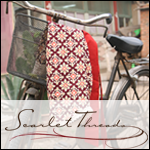Yes, folks, I am not kidding. We're going back to China! China gave us PA for a sweet little girl who will be 5 in January (to Reese's 8 in October).
Under current Hague laws, which are kind of confusing to begin with, I can't give a whole lot of information about her, as I understand. But I can share this.
Introducing my new little sister, Ana-Cherie!
Like Reese, she has a facial birthmark, and it is listed as being elsewhere as well (that's more than we got with Reese...we were somewhat surprised that she had port-wine stain elsewhere, but that didn't matter.) She had a seizure last fall, but she has had physical therapy for it and everything seems to be fine. At the last update we have of her, she was 30 lbs and 36" tall. We hope to travel to get her next summer.
Current Timeline:
I first saw Ana-Cherie's picture: 06/27/2012
Submitted Application for Pre-Approval (PA) and Waivers: 08/09/2012
PA: 08/20/2012
We have until Feb 21, 2013 to be DTC (Dossier to China).
This is a completely surprising adoption, as we really were not looking to adopt again, but here we are, unexpectedly "expecting".
We currently have 2 fundraisers running for our adoption. This was kind of a surprise "pregnancy", as we really weren't thinking we would ever go back to China.
Current Fundraisers:
We currently have 2 fundraisers running for our adoption. This was kind of a surprise "pregnancy", as we really weren't thinking we would ever go back to China.
Current Fundraisers:
- Puzzle Piece Fundraiser- $5 buys a puzzle piece, which we will write your name on.
- Tupperware Fundraiser- This runs through OCTOBER 26. We get 40% of the proceeds towards our adoption of Ana-Cherie. They have some really awesome products, and because this is online, they are shipped straight to you.



















